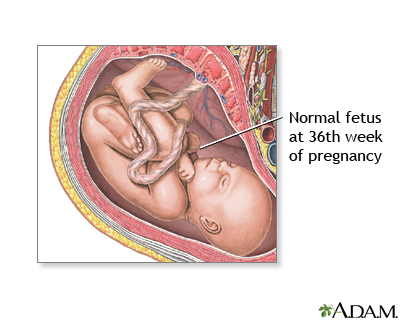

  |

As you start your ninth month and look down at your burgeoning belly, you might notice a passing leg or arm poke out or punch you. But sometimes, you might sense a quietness that makes you wonder just what is going on inside. Usually the peak of baby movement activity takes place at 28 weeks. It may slow down a little as you get closer to your due date, simply because the baby has a very limited amount of space to move around, now that he is so big!
Sometimes women are asked to keep a record of how many baby movements they feel in 1-2 hours. This may be something you do as the only test, or it may be in conjunction with some other monitoring that will be done at the doctor's office or a hospital facility. Generally, this is done to check the well being of the baby (how is the baby doing inside your uterus). You may even be asked to keep track of the movements and to record your findings from home. A common number used is 10 movements (any kind of movement such as punches, kicks, rolling, etc.) within 1 hour. The time of day that you decide to monitor the movement really does not matter, but for some reason it is more common to feel more activity in the late evening or after a meal. Every woman and baby are different, so whatever time of day works best for you will likely be fine. It is common to be told to lie on your left side in order to be able to focus on feeling the activity and actually keeping track of it. You will be communicating this information to your health care provider.
NOTE: If you do not feel your baby's movements at all or suddenly sense frantic activity, call your doctor without delay.